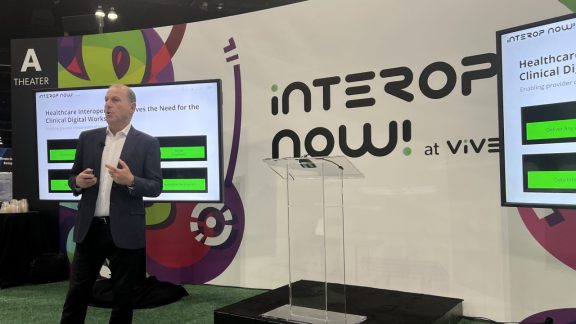The industry’s virtualization infrastructure leader acquired us today. At just over three years old, VMware realized the potential of CloudVolumes’ technology to disrupt status quo application delivery.
It’s a proud day at CloudVolumes today as we celebrate our acquisition by VMware and look forward to the prospect of continuing the growth of our product on a global scale with the power of the industry’s top player behind us.
I’d like to briefly tell you the CloudVolumes story and explain why our technology will change how customers think about application lifecycle management.
The CloudVolumes journey started in 2011 with some astute observations by our founders.
They realized that by virtualizing below the OS, hardware virtualization could address many problems of the pre-virtualization world such as hardware lock-in, low server utilization and data center agility. The pre-virtualization world was in effect a per-server management model. Easing the burdens of this world created a new industry.
In a post-virtualization world, many people are now using a per-VM management model. In other words, managing dedicated virtual machines for specific applications. With the explosion in growth of applications running on virtualized infrastructure, this has increased the pressure on IT management and administration. As a result, the number of virtualizable servers has dramatically increased in the last decade, generating demand for better management tools and automation. As the Mobile/Cloud era continues to evolve, there will be an even greater need to manage applications in new ways. IT must provide agile solutions that enable real-time service delivery for the move to private and hybrid clouds.
Application Management Containers
In this new world, problems emerge as the demand for real-time application delivery strains existing infrastructures. For example, how do you deliver thousands of applications to thousands of machines in mere seconds?
This can be accomplished by eliminating the need for per-VM management and virtualizing above the OS.
By virtualizing above the OS, applications can be natively provisioned without modification. Applications become abstracted from the underlying OS and organized into application management containers leveraging existing storage and networking. These applications can then be delivered to diverse environments in real time.
This approach significantly reduces the infrastructure overhead and simplifies application lifecycle management.
The Key Benefits For Customers
Once you understand the basics of the technology. It’s helpful to categorize the benefits as you think about specific use cases:
Agility
- Logically manages application workloads based on business needs
- Delivers or upgrades application workloads across all VMs in seconds
Simplicity
- Integrates into existing infrastructure in minutes
- Provisions applications as easily as installing them
Flexibility
- Provides persistent user experience with non-persistent economics
- Compatible with almost any hypervisor or workload, server or desktop
Efficiency
- Optimizes use of storage, SAN IOPS, and network.
Seeing Is Believing!
One of the challenges the CloudVolumes team has faced is that when people first hear about the concept of virtualizing above the OS, they don’t believe it is really possible or understand what it is. They often incorrectly equate us to an existing approach or feel that there must be some voodoo under the covers.
A lot of people consider the CloudVolumes technology to be a “layering” technology in the Microsoft Windows world. However, “layers” are more of a concept than an agreed upon method of implementation for a technology. For Windows-server use cases, many refer to CloudVolumes technology as containers for Windows. Hence at CloudVolumes we’ve always used the more generic term of “virtualize above the OS,” which enables real-time application delivery.
CloudVolumes’ technical architecture is a hybrid between layering, application virtualization and containers that enables customers to have high application compatibility while working with existing infrastructure.
To dispel a few myths about how CloudVolumes technology works, I’ll borrow an excerpt from a blog I posted prior to joining CloudVolumes when I was just beginning to realize the potential of the technology:
“[CloudVolumes] achieves this by installing applications natively into storage and then capturing them as VMDK/VHD stacks outside of the OS, which can then be distributed. You may think this is just like application packaging with App-V or ThinApp but it’s not quite that. They natively store the bits as they are written during the install, in a different location, and then take note of things like services, which are started and roles, which are enabled into the OS. These are then ‘put’ onto the AppStack volume, and when complete (which can span reboots, and several apps or dependencies being installed one after the other) you tell the agent through a dialog in the provisioning VM you are done, and that VMDK/VHD is then locked as a read-only volume which can now be assigned to others.
When this read-only volume is attached to a server or desktop VM running their agent, its contents are immediately virtualized into the running OS, registry, files etc. Unlike ThinApp or App-V, it’s immediately available and seen by other applications on the system as if it was natively resident (no need to stream)—without having to do any special registry changes to see the contents of the opaque object/package within ThinApp/App-V.”
What’s also really nice is that CloudVolumes technology doesn’t need full VM control to do what we do. So this means we can dynamically attach apps without recomposing or reboots.
As the old adage says, a picture speaks a thousand words. Hopefully a video or two will help further clarify how our approach is unique.
This first video demonstrates how applications from a CloudVolumes Virtual Machine Disk VMDK container can be remotely published to Remote Desktop Session Host (RDSH) servers. This makes it easy to (real-time) add new applications to an RDSH server without the need to install apps into each RDSH server, create silos of RDSH application servers or to update the RDSH template and create new VMs.
In this second video, Microsoft Office 2013 (Powerpoint and Word) is real-time delivered via CloudVolumes technology into a VMware Horizon pooled desktop. This demonstrates the agility IT is to able move with in providing applications to users that where not available just seconds earlier.
In this third video a server example is given, with CloudVolumes dynamically delivering SQL Server 2008 and a large 1GB database containing more than 1M rows–all within a few seconds. Next, we upgrade to SQL Server 2012 and then rollback to SQL Server 2008 all within a few seconds and a few clicks!
Moving Towards Disposable IT
Our customers want an aggregate reduction in the complexity of managing applications. The overhead of application lifecycle management today is just too costly and slow.
Fundamentally customers are trying to move to a world where they can reduce complexity and cost not just by simplifying application management infrastructure, but by leveraging real-time application delivery to reduce support costs by making it easy to reset applications to a known good state and deliver rapid change.
They’d rather quickly start again with a known-good configuration rather than spend endless hours troubleshooting. As they adopt and build new applications, a static infrastructure can’t deliver the service that is required in a modern world. They need a better way to enable their users to be more productive with rapid service delivery given that continuous change will be the norm. In this world, you need to be able to spawn and (adeptly change then) re-spawn (any component in the infrastructure) or service on demand. There is no need to stay with static infrastructure that is difficult to maintain. Use want you need, then dispose of it and then start again fresh when you need to do so.
Enabling this type of capability in the infrastructure has opened up many new possibilities for customers who have found some incredibly innovative ways to build and deliver new services using CloudVolumes. Joining forces with VMware, who had the foresight to understand our vision and differentiators, will allow the CloudVolumes team to reach out to a substantially larger number of potential customers globally and collaborate to enable new possibilities.
We are very proud of what we have achieved in just over three years. I want to thank all of our customers and partners who have believed in us. VMware is an incredible engineering organization and we are honored to strengthen that team with our family. Personally I am stoked and humbled to have the opportunity to lead and serve our amazing team moving forward. I look forward to the future with excitement and sharing more of our plans at VMworld. And now, some champagne!
@harrylabana











